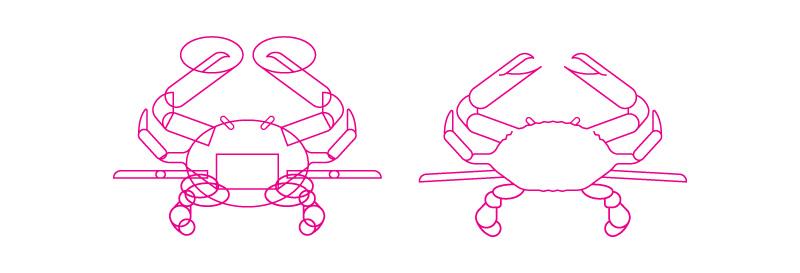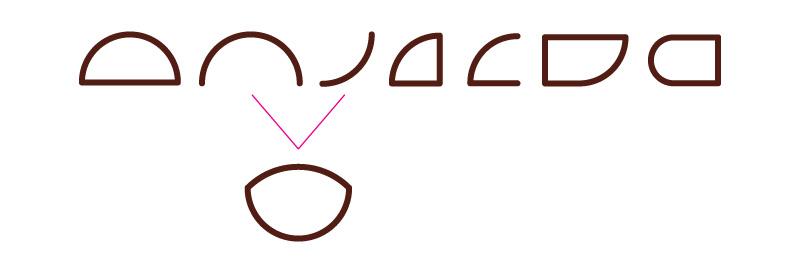Whether you are a designer, or haven't doodled anything since you were bored in study hall, have you ever wondered what it takes to successfully illustrate something fun and compelling? After all, illustrations and graphics can be powerful visual tools used to enhance our content. Luckily, the answer is quite simple: all you need is creative problem solving, basic shapes, and a few tricks up your sleeve. This won't be a step-by-step tutorial, because with the method I will be sharing with you, that won't even be necessary. Instead, I will be sharing a creative and illustrative way of thinking that can empower anyone to create effective illustrations and graphics. Even if you have no desire to illustrate something, I hope this will show you that critical problem solving can be found in even the most seemingly complicated and technical creative processes like illustration.
Note: for those of you that have no experience with Illustrator, I will share some very simple technical tips that will allow you to reproduce anything I share.
Basic Shapes
Firstly, I want to introduce you to the real superstars and building blocks behind any illustration: basic shapes. I'm confident that pretty much anything you could think of can be illustrated by using just these shapes. It doesn't matter how complex the subject is, everything can and is made up of shapes. Seeing things this way can be difficult and take practice; but, the first step to successfully illustrating something is getting into this mindset and effectively observing our subject as shapes. For instance, below are some basic shapes...or are they?

Instead of basic shapes, what if I said they were a tasty piece of pizza, a nice refreshing pop, or a delicious ice cream cone?

What Do You See?
As a quick exercise, how many other things can you see using just these shapes, whether alone or in combination with one another?
This might seem rudimentary but it will get our creative wheels turning. This kind of exercise also trains the brain to find basic shapes when looking at everyday objects we wish to depict. Seeing things in terms of shapes makes visually reproducing them much more simple and straightforward and provides a clear-cut process. I think a lot of people trying to illustrate something skip this step and immediately see the form they wish to visualize in its entirety. That makes things overly complicated, and the process of recreating it overwhelmingly difficult.
Introducing Mr. Crab
Ok, so pizza, pop and ice cream was child's play, what if we want to create something more complex where the shapes are not immediately obvious. To illustrate that this technique is not limited to simple illustrations, I thought creating a summer-inspired crab graphic might be fun. Below you can see what I came up with, and I will explain how even this seemingly complex illustration was created only using basic shapes and critical thinking. Don't worry, he doesn't pinch.

More Complex Drawings with Shapes
Now that we have seen what shapes can become, and are in the correct mindset from our previous exercise, it might be obvious how I used shapes to create this more complex illustration. For instance, were you able to observe that 99% of the illustration only used one of our shapes, the circle? If it's not immediately obvious, that's also totally fine. Like I have mentioned, it takes practice to observe things like this when we are so used to seeing everyday objects in their complete form. Sometimes seeing things in a simpler way is harder than seeing them as complex objects. To help us, let’s see how our cute crustacean was created using just circles and some critical thinking.

At first, this may look a little complicated, maybe even dizzying, but it proves that I did nothing more than simply create a circle, duplicate it, and move it around, which I am positive anyone can do. It also proves that the basis of an effective illustration has to do more with figuring out how and where to use shapes, rather than anything technical. In fact, the technical part of creating the crab was the easy part, drawing shapes takes mere seconds, but seeing an object broken down into those shapes so that we can use them to illustrate is the true creative challenge. If our cute crab friend was too simple in proving this point, below is a much more complex illustration that was also created using just basic shapes and the same creative process as the simple version.

Obviously our crab got a little more complicated; let's get back to our simplified version. He's more fun anyhow. I mentioned earlier that the diagram before was quite complex, I only shared it to prove that only circles were used. After all, it can be hard to believe when seeing the final product.
Modifying Shapes
It’s important to note that during the process of creating the illustration, I never saw all of those circles at one time, that would quite overwhelming, which this process is anything but. This leads me into an extremely important point when using this method of illustration, shapes can be endlessly modified to become even more powerful and flexible tools. Think of shapes not as static objects but instead as flexible forms that can be added to, subtracted from and transformed to our liking. Without thinking this way, it would be tough to go beyond our pizza, pop and ice cream, and into more complex illustrations.
Below is an example of how many different ways a simple circle can be modified. In fact, combining two of these modified circles is how we arrived at our crab's body. It's important when breaking an object down into shapes, that we also look for parts or combinations of shapes in the things we wish to illustrate. If we look at something simple like a rainbow, finding a complete shape is not possible, but if we see shapes modifiable we can easily see it's a half circle.

If we thought of shapes as impossible to modify, our crab illustration would remain a bunch of dizzying circles like in the diagram shown earlier, rather than a collection of circle segments. All of this might be obvious but I think it would be surprising to see how few people would decide to illustrate the form above with circle segments rather than reaching for the pen tool. The idea of creating something by subtracting something else is a bit perplexing. After all when we think of illustrating we think of adding shapes together not subtracting from them. Only after we subtracted from circles could we add them together to create our crab's body. Figuring out what to add, what to subtract, and in what order is a huge part of the illustrative process. Shapes are powerful building blocks, adding or subtracting from them creates endless possibilities and uses them to their full illustrative potential.
I hope that the couple examples I have given, and points I have made, have proved that anyone who can create a shape can illustrate whatever they want. It’s important not to be intimidated by irrational thoughts that an overwhelming amount of technical skill is required to create effective illustrations and graphics. I also hope everyone walks away from this with a more curious eye and starts training their themselves in seeing shapes in everyday objects. Even if you have no desire to illustrate, I hope this article has demonstrated that even in seemingly complicated processes, there are ways of critically thinking to make things easy on ourselves.
Watch and Learn
To wrap up, there are obviously still some technical tricks you can add to your illustrator tool belt that I would love to share. After learning these, and putting the process to practical use you could illustrate anything you could hope to.
Comments
Tutorials like this is what I love. I always like to add people like you to my list of experts who teach people how to solve problems by thinking. Knowing the procedures is fine. But for me, what I have learnt while reading a lot of programming books is that, you become more powerful when you master the art of thinking in solving a problem. It is this thinking that drives that sort of creativity to become a top gun.
After reading this article, I drew the first sets of objects above. I found out that It was very easy. It was as if I already knew it.
Thanks.
I would be grateful if you could direct me on how to get more tutorials on graphics, especially illustration. I like the attitude of Creative Arts Director. Sorry for asking too much. Please, I prefer tutorials that teaches you how to think when solving a problem. Concerning the procedures, that's a piece of cake.
I have always wanted to be someone like a Creative Arts Director, Developer, Illustrator, Business Development Executive, Strategist and similar fields like these. Their attitude is inspiring.
Looks like my comment is turning into an article.
This is my first comment in an international website.
(DON'T READ THIS: Phew! finally I made a commenet)
Thanks so much for taking the time to leave such a great comment, and for your kind words! I'm so happy to hear that you found my article helpful. Honestly, I don't know a lot of tutorials that go into creative thinking, a lot are focused on technical tips and tricks which is why I wanted to write an article like this instead. I am sure they are out there though, and I will certainly let you know if I come across any that I can share. Maybe I can even do a blog post on creative thinking tutorials/learning exercises. It's awesome to hear that you have aspirations of working in the creative field and I wish you the best of luck!
Add new comment